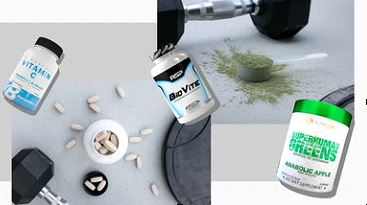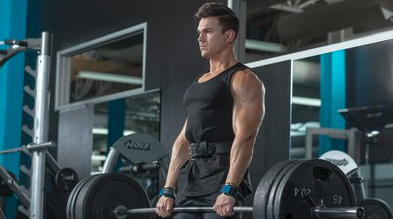Laurence Grigorov is director of a residential property development company based in Johannesburg, South Africa that specialises in bespoke high-end luxury living. In his spare time Laurence Grigorov enjoys training at the gym as well as travelling.
Laurence Grigorov found an online article in www.bodybuilding.com written by My Obvi that highlights simple steps we can take to successfully start a weight-loss program:
Do you want to lose weight? Don’t be embarrassed! Living a healthier lifestyle is possible for everyone at any age. Losing weight takes patience, strength, and commitment. Some people will find it easier than others to shed the extra pounds. Don’t compare yourself to anyone else. Whatever happens, just keep going! Everyone’s weight-loss journey is unique, but what they all have in common is the desire to lose weight.
Here are some tips if you want to lose weight and some insight into the journey you will make:
Tip 1: Realize You Will Be Making Sacrifices
If losing weight were a piece of cake, the United States wouldn’t be waist-deep in an obesity epidemic. To lose weight, you’ll have to cut back on eating certain foods that are high in calories (like cake) or otherwise unhealthful, even though you may find them delicious. You don’t have to sacrifice taste, however. With a little creativity in the kitchen—and a basic internet search for recipes—you can have diet-friendly meals that satisfy your taste buds as well as your protein, carb, and fat allowances.
Along with cutting back on certain foods, you’ll also have to increase your activity to burn extra calories. Less TV, more exercise. You should continue to make these sacrifices until you reach your desired weight-loss goal, at which point you can loosen the reins a bit.
Tip 2: Make A Commitment And Stick With It
Many people start a weight-loss journey only to feel discouraged after a couple of weeks or months, at which point they quit. If you want to lose weight, you must stick with your goal. It will take a lot of commitment before you start to see a difference in your weight. Don’t grow discouraged if success doesn’t come overnight. (Warning: It won’t. And that’s OK.) Even though you may not see physical results, if you’re eating well and exercising, you may be building muscle. Gaining strength is a plus for your weight-loss journey because while you’re losing some fat pounds, you’re putting on lean mass, aka muscle.
Tip 3: If You’ve Started And Stopped, Give Yourself Permission To Start Again
You may reach a point where you decide to give up on your weight-loss journey for any number of reasons. It could be a life shock, a schedule change, or even simple frustration that you’re not progressing quickly. If you do stop, you’ll likely resume the habits that made you gain unwanted pounds in the first place.
Regardless, you can always try again. To quote self-help author Mel Robbins, “You are not a failure, even when you’ve failed. It’s an event, not a personality trait. No matter how many times you fail, it will not define you unless you let it.”
Tip 4: Build A Support System
Weight loss doesn’t have to be solitary. Find supportive friends and family to join you on this journey. Who knows, maybe they’ll decide to lose weight with you! In that case, you can plan days to work out or prepare meals together. You’ll also be able to hold each other accountable for mistakes and encourage each other to stay on the right track.
If you don’t have any friends or family members who want to come along, join an online weight-loss support group, where you can chat with other people about your experiences. You can also join a gym and take a fitness class where you’ll meet people who are trying to accomplish similar goals to yours. That said, the most important supporter you have should be you. At the end of the day, it’s up to you to continue the journey and accomplish your goals.
Tip 5: Accept That You’ll Never Follow Your Diet 100 Percent, And That’s OK
Unless you are infallible, there will be days, even on a diet, when you overeat. Don’t give up. Mistakes happen. The important thing is to accept that you made a mistake, learn from it, and try not to do it again. If you want to do something constructive after overeating, hit your next workout extra hard and burn some extra calories. Then, resume your diet.
Tip 6: Exercise—And It Doesn’t Have To Be In A Gym
Exercising will help you reach your weight-loss goals faster. You can train at the gym, or you can exercise in the comfort of your own home. BodyFit by Bodybuilding.com offers great options for both approaches!
Tip 7: Practice Patience—You’ll Need It
Weight loss requires patience. Depending on how much weight you hope to lose, it may take weeks, months, or even years to reach your goal. Given that it’s going to take a while, learn to enjoy your weight-loss journey. Rather than getting hung up on setbacks, focus on the small achievements along the way.
Tip 8: Dial In Your Diet
We’ve already discussed the calories-out part of the weight-loss equation, meaning exercise. Now let’s talk about the calories-in part, namely, your diet. If you want to lose weight, you probably need to cut some calories, unless you want exercise to do all the work—which is not feasible for most people. The goal is to eat below your maintenance calories every day to lose at least one pound a week.
Tip 9: Step Away From The Scale
One of the biggest mistakes people make on their weight-loss journey is constantly checking the scale to see if they’ve lost weight. Unfortunately, if you don’t see immediate results, you may grow discouraged. Again, this is a slow process. Only check your weight once a week or once every two weeks, not every day. Mornings, when you wake up, are the best time to check because your stomach is empty and you’ll get a more accurate depiction of your body weight. To keep yourself motivated, track your progress by writing down your weight every time you weigh yourself.
Tip 10: Remember Why You Started
You will want to give up at various times during your weight-loss journey, but always remember why you started. You knew it was going to be hard, but you decided to make the commitment to reach your goals. You’ll do yourself a disservice if you give up. Try to imagine the finish line and how happy you’ll be when you get to live with the results you’ve dreamed of. Nothing in life comes easy, and all of the hard work and sacrifices will pay off in the end if you get there—so do it!
Words & images courtesy of www.bodybuilding.com


